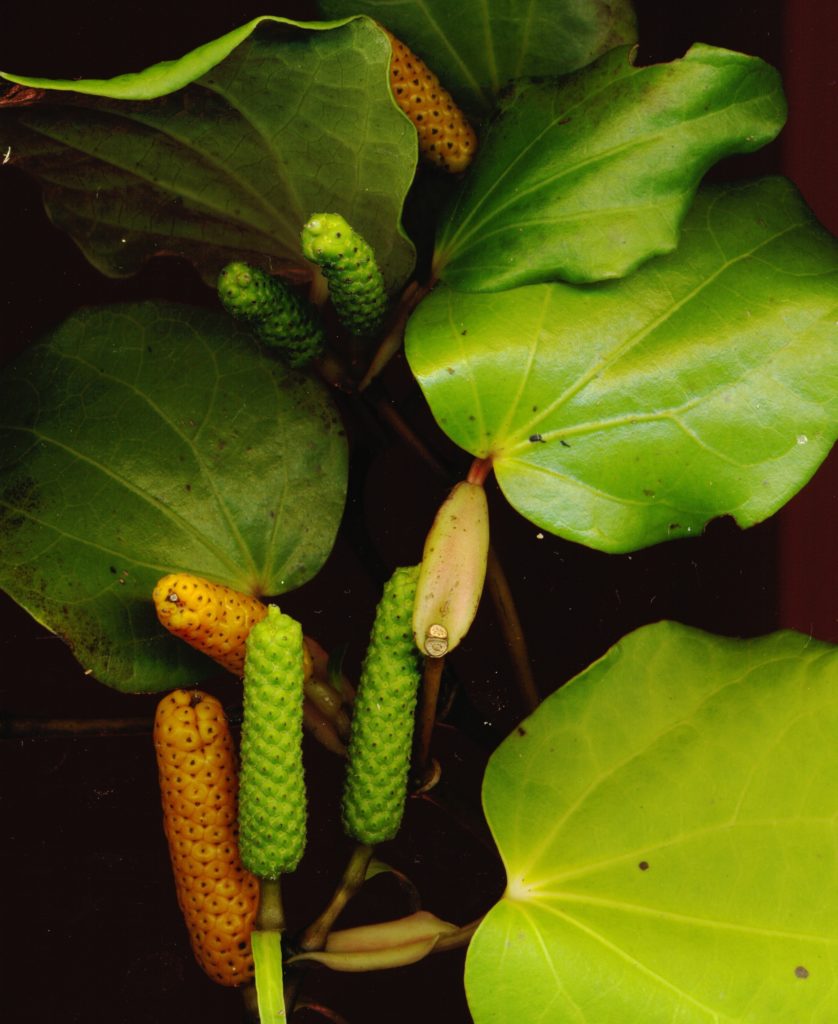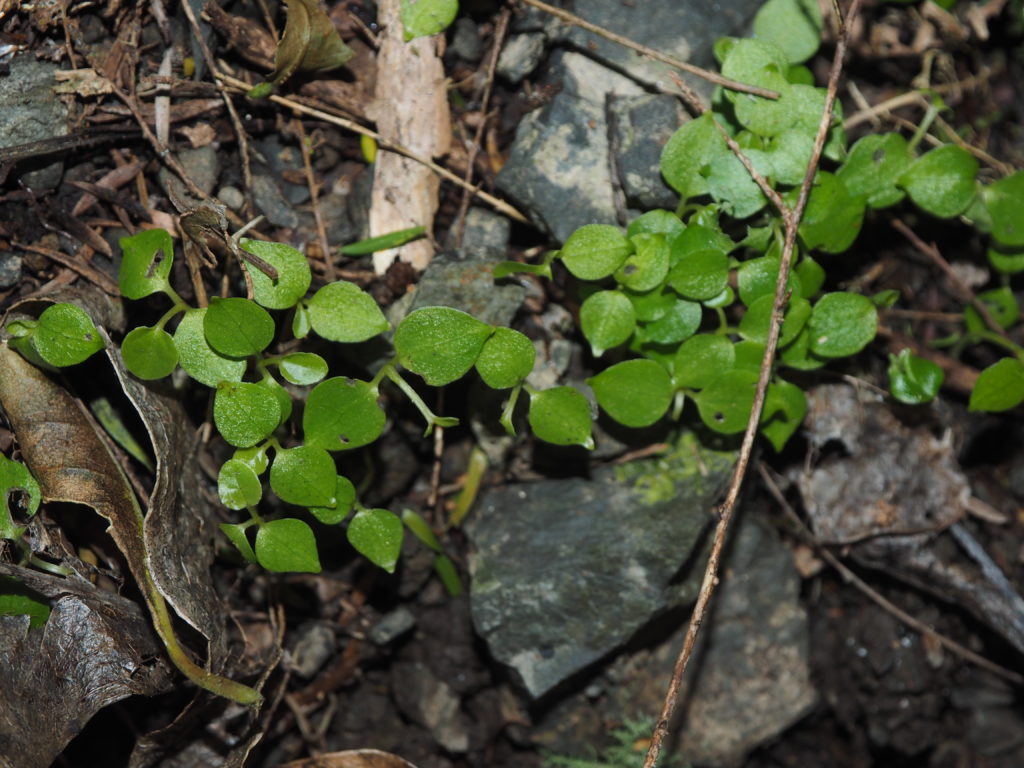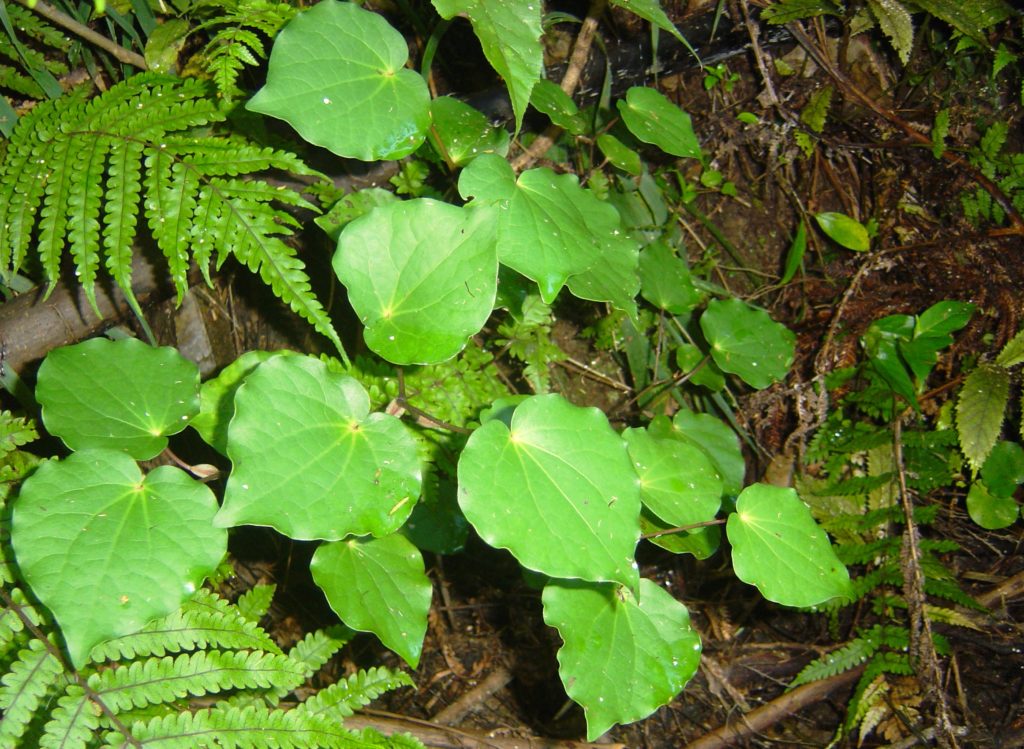I usually think of understorey shrubs as tolerating shade. Growing slowly, producing small amounts of seed but being long lived. Not at all like colonising shrubs like karamu, koromiko or manuka, which need plenty of sunlight, grow quickly, produce huge amounts of seed, tolerate extreme weather but are short lived.
 You have to be quick to get the bright orange fruit before the birds.
You have to be quick to get the bright orange fruit before the birds.
Each species of plant has arrived at a unique combination of strategies for growth reproduction and dispersal. Having unique strategies makes sure the species fits in with the other plants around avoiding direct competition.ou have to be quick to get the bright orange fruit before the birds.
Kawakawa is certainly unique, like other understorey species, kawakawa grows in deep shade, is intolerant of even light frosts but it produces huge quantities of succulent fruits, each having lots of seeds imbedded in them. When we first fenced out the neighbours cows from under our kanuka forest, it was kawakawa which took over the understorey. First a few shrubs established on the bare ground, then within a few years they started flowering in late winter with ripe fruit coming in December. Before long those few shrubs were parent to a mass of shrubs, each covered in either male or female inflorescences (Clusters of tiny flowers). Now, each winter the ground is carpeted with kawakawa seedlings, way to many to all mature but ready in case an opportunity arises.
 In late winter the forest floor is carpeted with kawakawa seedlings
In late winter the forest floor is carpeted with kawakawa seedlings Now we have a dense undergrowth of kawakawa and the birds are well fed
Now we have a dense undergrowth of kawakawa and the birds are well fed